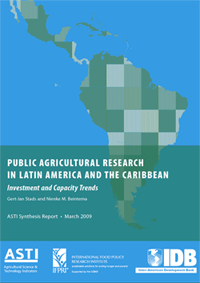Introduction
The countries
of Latin America and Caribbean (LAC)
represent a wealth of natural resources; the
world’s greatest agrobiodiversity; and
immense economic, social, and environmental
diversity. As an example, the region is home
to Brazil—the world’s fifth-largest country
in terms of both area and population—yet it
also comprises numerous Caribbean island
nations populated by fewer than 100,000
people. Nonetheless, LAC countries exhibit
much commonality, including significant
urban populations, high ethnic diversity,
and increasing inequality and poverty.
Another shared factor is that many LAC
countries have reformed or are in the
process of reforming their economies through
structural adjustment programs. Agriculture
faces many challenges in LAC, especially in
the context of development. Rising food
prices are a growing policy concern for both
low- and middle-income countries, and,
whereas the region as a whole is a net food
exporter, poor consumers suffer the negative
impacts of food-price inflation on their
incomes and thus on their health and
nutrition. In addition, international value
chains and supermarkets are transforming
domestic food markets, thereby posing
serious challenges to smallholders in their
ability to remain competitive. As commercial
agriculture expands, the agricultural labor
market and rural nonfarm economy become
vital if resulting productivity gains are to
have a beneficial effect on rural poverty
Full report:
http://www.asti.cgiar.org/pdf/LAC_Syn_Report.pdf
